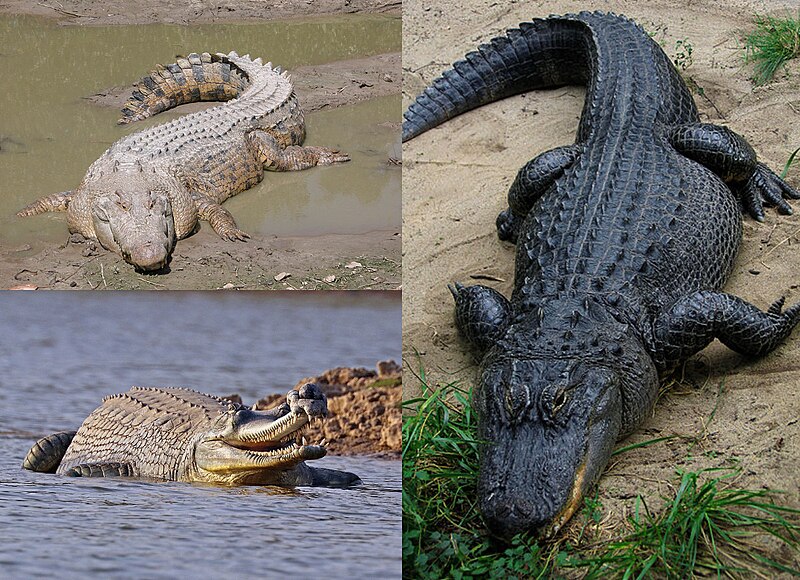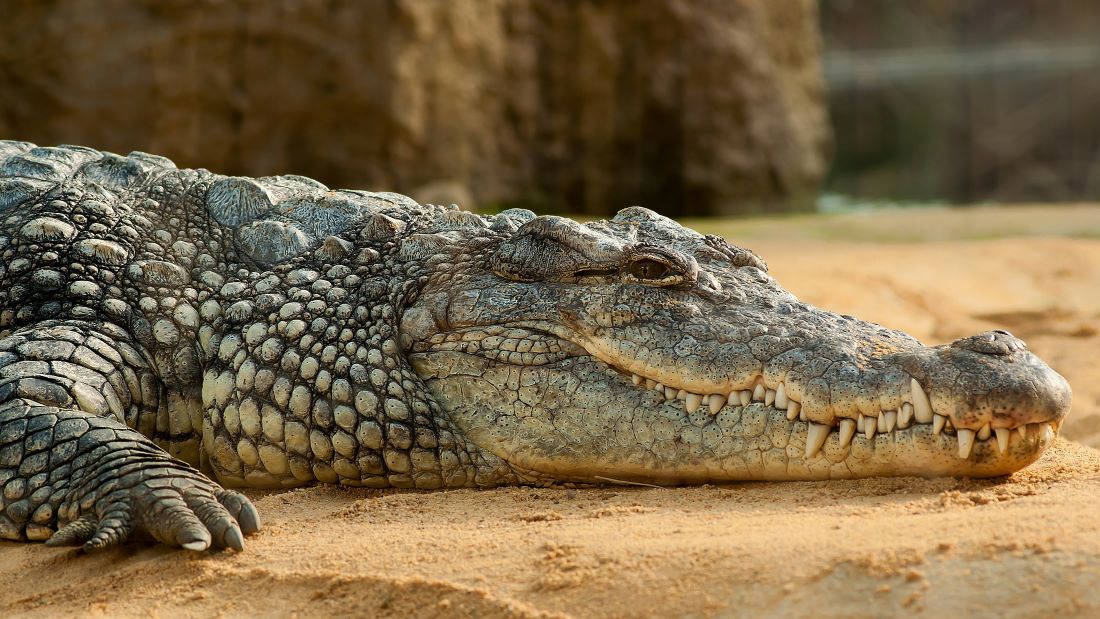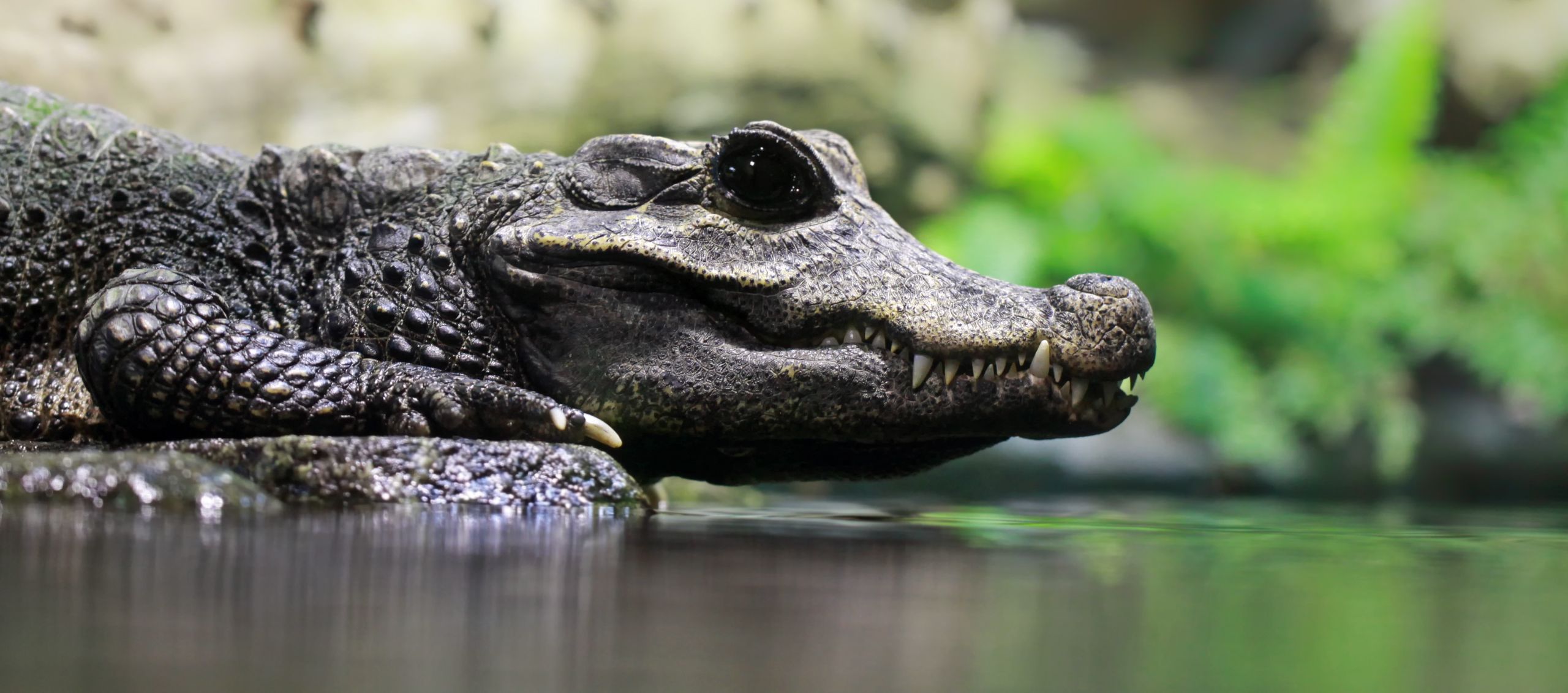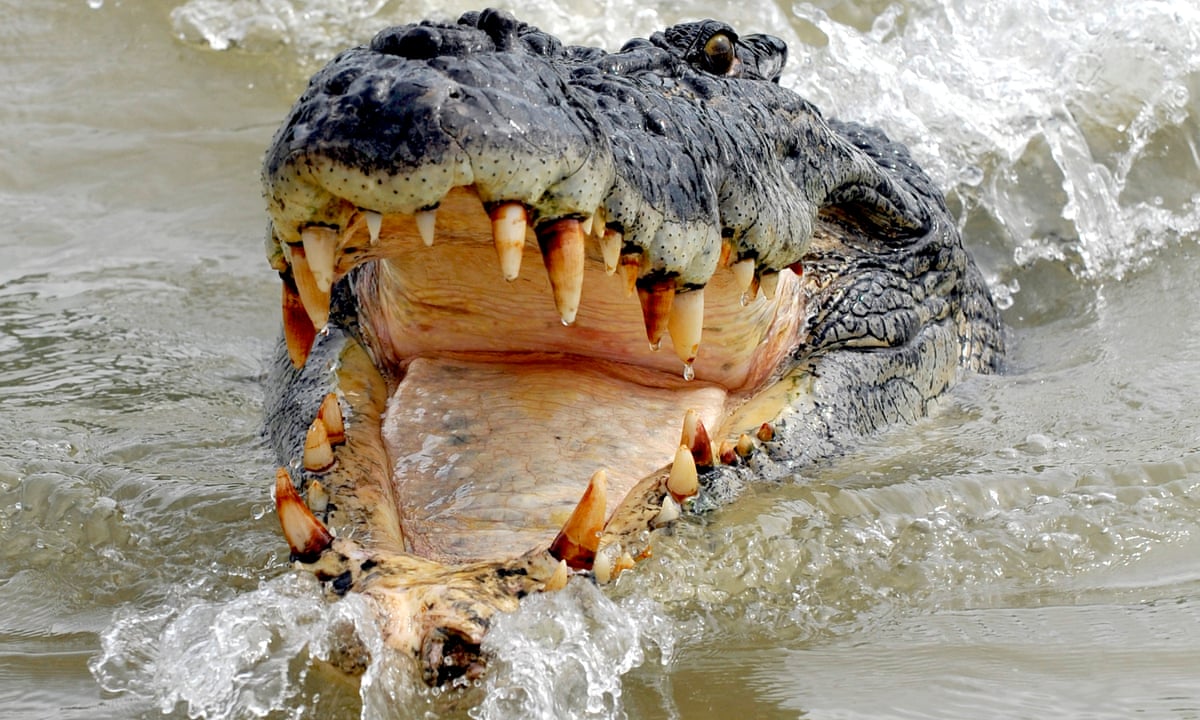The Silent Hunter: A Closer Look at the Enigmatic Crocodile
 In the murky waters of rivers, swamps, and estuaries, a silent predator lurks, instilling both fear and fascination in those who encounter it. The crocodile, with its formidable jaws and prehistoric lineage, occupies a unique space in the natural world, embodying power, stealth, and adaptability. Despite their ancient origins, crocodiles remain enigmatic creatures, their behavior and ecology often shrouded in mystery. Let us embark on a journey to unravel the secrets of these extraordinary reptiles.
In the murky waters of rivers, swamps, and estuaries, a silent predator lurks, instilling both fear and fascination in those who encounter it. The crocodile, with its formidable jaws and prehistoric lineage, occupies a unique space in the natural world, embodying power, stealth, and adaptability. Despite their ancient origins, crocodiles remain enigmatic creatures, their behavior and ecology often shrouded in mystery. Let us embark on a journey to unravel the secrets of these extraordinary reptiles.
Crocodiles belong to the order Crocodylia, a group that includes crocodiles, alligators, caimans, and gharials. Among them, the crocodile stands out for its size, strength, and distinct features. With species distributed across the tropics and subtropics, from the Nile Delta to the Australian Outback, crocodiles have adapted to a wide range of habitats, demonstrating their remarkable resilience over millions of years.
One of the most iconic features of crocodiles is their powerful jaws, armed with rows of sharp teeth designed for seizing and tearing prey. Contrary to popular belief, a crocodile's jaw is not built for chewing; instead, it relies on its immensely strong muscles to clamp down with tremendous force, exerting pressure that can crush bones and rip flesh apart. This formidable bite is essential for hunting, allowing crocodiles to ambush unsuspecting prey that ventures too close to the water's edge. Crocodiles are apex predators, occupying the highest rung of the food chain in their ecosystems. Their diet varies depending on their size, habitat, and availability of prey, but they are opportunistic feeders, capable of consuming anything from fish and crustaceans to birds, mammals, and even other reptiles. Despite their reputation as fearsome predators, crocodiles are also scavengers, feeding on carrion when the opportunity arises.
Crocodiles are apex predators, occupying the highest rung of the food chain in their ecosystems. Their diet varies depending on their size, habitat, and availability of prey, but they are opportunistic feeders, capable of consuming anything from fish and crustaceans to birds, mammals, and even other reptiles. Despite their reputation as fearsome predators, crocodiles are also scavengers, feeding on carrion when the opportunity arises.
One of the most fascinating aspects of crocodile behavior is their strategic hunting techniques. Rather than relying solely on brute strength, crocodiles employ stealth and patience to stalk their prey. They often lie in wait, partially submerged in water with only their eyes and nostrils visible above the surface, blending seamlessly with their surroundings. This ambush strategy allows them to surprise their victims, striking with lightning speed when the moment is right.
The sensory abilities of crocodiles play a crucial role in their hunting success. Their eyes and nostrils are positioned on the top of their heads, allowing them to remain almost completely submerged while keeping a lookout for potential prey. Their eyesight is exceptionally keen, especially in low light conditions, making them formidable nocturnal hunters. Additionally, special sensors on their jaws enable crocodiles to detect vibrations in the water, helping them pinpoint the location of nearby prey with remarkable accuracy.
Despite their fearsome reputation, crocodiles are also nurturing parents, displaying remarkable care and devotion to their offspring. Female crocodiles build nests on the banks of rivers or in shallow waters, using vegetation to create a mound where they deposit their eggs. The incubation period varies depending on factors such as temperature and species, but typically lasts several months. During this time, the mother crocodile remains vigilant, guarding the nest against potential threats and regulating the temperature by adjusting the nesting material. When the eggs hatch, the mother assists her hatchlings by gently carrying them in her mouth to the water, where they are introduced to their aquatic environment for the first time. This initial period is critical for the survival of the young crocodiles, as they learn essential skills such as swimming, hunting, and avoiding predators under the watchful guidance of their mother. Despite their vulnerable status, crocodile hatchlings are remarkably resilient, equipped with instinctual behaviors that enable them to thrive in their harsh environment.
When the eggs hatch, the mother assists her hatchlings by gently carrying them in her mouth to the water, where they are introduced to their aquatic environment for the first time. This initial period is critical for the survival of the young crocodiles, as they learn essential skills such as swimming, hunting, and avoiding predators under the watchful guidance of their mother. Despite their vulnerable status, crocodile hatchlings are remarkably resilient, equipped with instinctual behaviors that enable them to thrive in their harsh environment.
The relationship between crocodiles and humans is complex, often characterized by fear and conflict. Throughout history, crocodiles have been both revered and reviled by different cultures, symbolizing power, danger, and primal forces of nature. In many regions where crocodiles are native, encounters with humans can result in attacks, leading to tragic consequences for both parties involved. However, efforts to mitigate human-crocodile conflicts are underway, with initiatives focused on education, conservation, and sustainable management of crocodile populations. Conservation efforts aimed at protecting crocodiles and their habitats are crucial for ensuring the survival of these iconic reptiles. Despite their resilience, crocodiles face numerous threats, including habitat loss, pollution, illegal hunting, and climate change. Many species are listed as endangered or vulnerable, highlighting the urgent need for conservation action to safeguard their future. By implementing measures such as habitat preservation, captive breeding programs, and community engagement, conservationists strive to secure a brighter future for crocodiles and the ecosystems they inhabit.
Conservation efforts aimed at protecting crocodiles and their habitats are crucial for ensuring the survival of these iconic reptiles. Despite their resilience, crocodiles face numerous threats, including habitat loss, pollution, illegal hunting, and climate change. Many species are listed as endangered or vulnerable, highlighting the urgent need for conservation action to safeguard their future. By implementing measures such as habitat preservation, captive breeding programs, and community engagement, conservationists strive to secure a brighter future for crocodiles and the ecosystems they inhabit.
In conclusion, crocodiles are remarkable creatures that inspire awe and wonder in people around the world. With their ancient lineage, fearsome appearance, and complex behaviors, they continue to captivate the imagination of scientists, conservationists, and nature enthusiasts alike. By delving deeper into the mysteries of crocodile ecology and behavior, we can gain a deeper appreciation for these extraordinary reptiles and the vital role they play in maintaining the balance of their ecosystems. As stewards of the natural world, it is our responsibility to protect and preserve the legacy of these silent hunters for generations to come. This essay provides a comprehensive overview of crocodiles, exploring their biology, behavior, ecological significance, and the challenges they face in the modern world.
This essay provides a comprehensive overview of crocodiles, exploring their biology, behavior, ecological significance, and the challenges they face in the modern world.
Crocodiles, with their prehistoric lineage and formidable presence, have long fascinated humans. Their adaptation to various habitats, from freshwater rivers to saltwater estuaries, showcases their remarkable resilience and evolutionary success. Despite their fearsome reputation as apex predators, crocodiles play a crucial role in maintaining the health and balance of their ecosystems.
One of the key ecological functions of crocodiles is their influence on prey populations. As top predators, they help regulate the abundance and distribution of prey species, preventing overpopulation that could disrupt the delicate balance of the ecosystem. By controlling populations of fish, crustaceans, and other aquatic organisms, crocodiles indirectly impact the entire food web, influencing the abundance of other species and shaping the structure of their habitats. Crocodiles also serve as indicators of ecosystem health, with their presence or absence reflecting the overall condition of their habitats. Healthy crocodile populations are often indicative of intact and functioning ecosystems, with clean water, abundant prey, and suitable nesting sites. Conversely, declines in crocodile numbers can signal environmental degradation, habitat destruction, or pollution, highlighting the urgent need for conservation action to address underlying threats.
Crocodiles also serve as indicators of ecosystem health, with their presence or absence reflecting the overall condition of their habitats. Healthy crocodile populations are often indicative of intact and functioning ecosystems, with clean water, abundant prey, and suitable nesting sites. Conversely, declines in crocodile numbers can signal environmental degradation, habitat destruction, or pollution, highlighting the urgent need for conservation action to address underlying threats.
In addition to their ecological significance, crocodiles hold cultural and spiritual significance for many indigenous communities around the world. In regions where crocodiles are native, they are often revered as symbols of power, wisdom, and longevity, featuring prominently in myths, folklore, and religious ceremonies. However, rapid urbanization, habitat destruction, and human-wildlife conflicts threaten the survival of crocodiles and the traditional knowledge and cultural practices associated with them. Efforts to conserve crocodiles must therefore incorporate both ecological and socio-cultural perspectives, recognizing the interconnectedness of humans and wildlife in shared landscapes. Conservation initiatives that engage local communities, respect traditional knowledge, and promote coexistence between people and crocodiles are more likely to succeed in the long term, fostering harmony between humans and the natural world.
Efforts to conserve crocodiles must therefore incorporate both ecological and socio-cultural perspectives, recognizing the interconnectedness of humans and wildlife in shared landscapes. Conservation initiatives that engage local communities, respect traditional knowledge, and promote coexistence between people and crocodiles are more likely to succeed in the long term, fostering harmony between humans and the natural world.
In conclusion, crocodiles are remarkable creatures that play a vital role in maintaining the health and balance of aquatic ecosystems. From their powerful jaws and stealthy hunting tactics to their nurturing parental care and cultural significance, crocodiles embody the resilience, adaptability, and complexity of the natural world. As stewards of the planet, it is our collective responsibility to protect and preserve these iconic reptiles, ensuring that future generations can continue to marvel at the silent hunters that roam the waters of our planet.



































